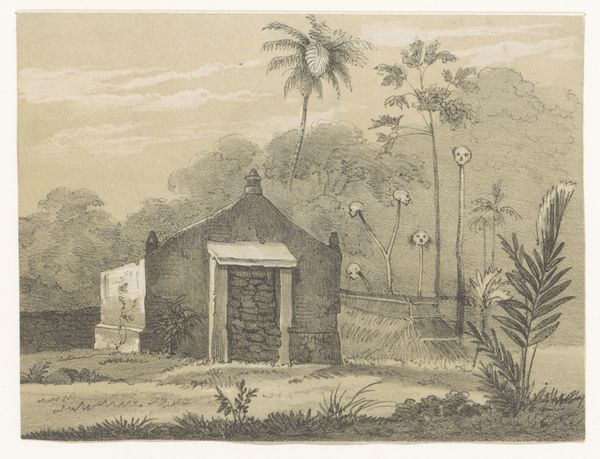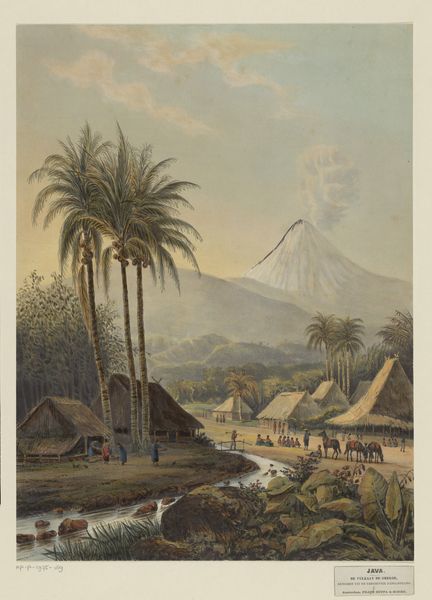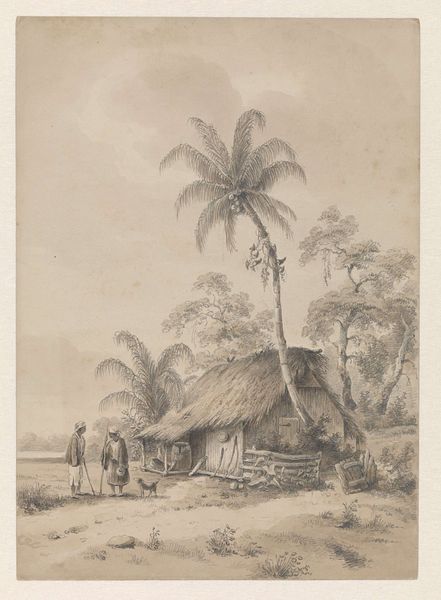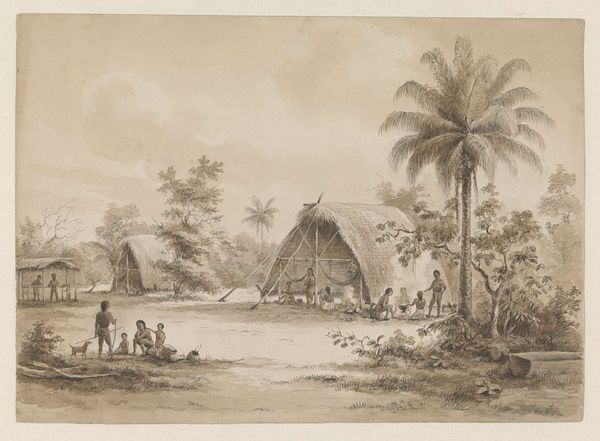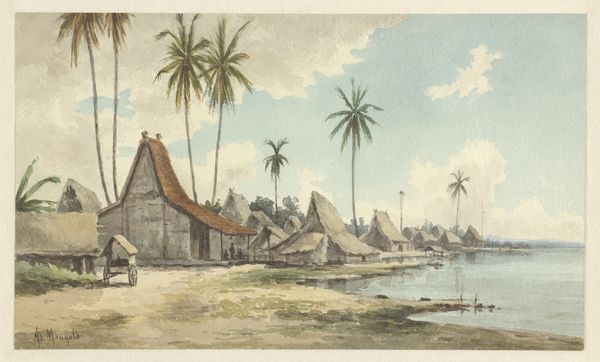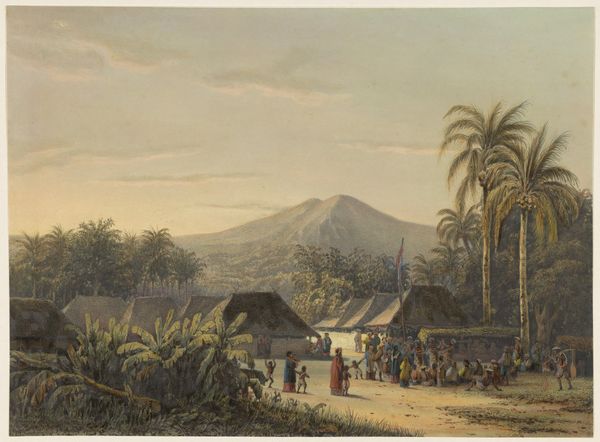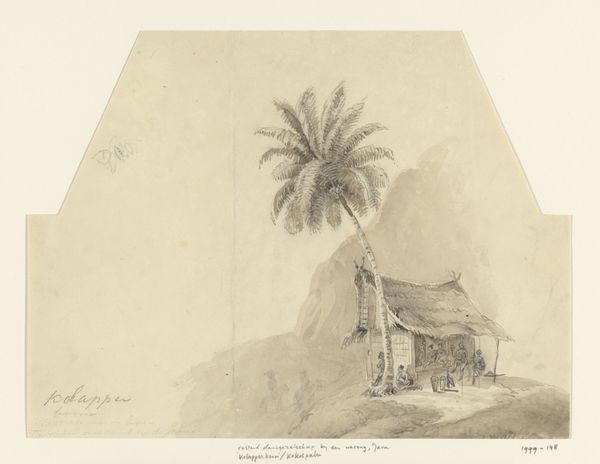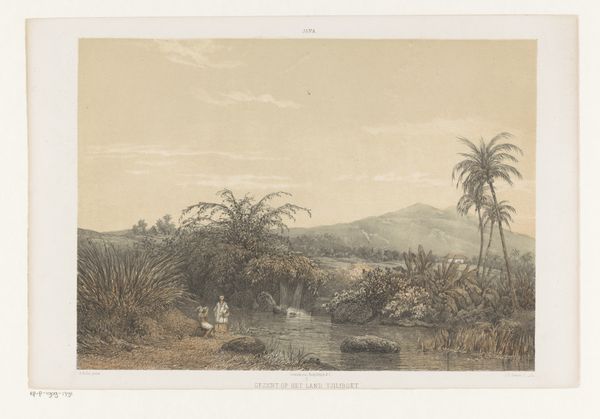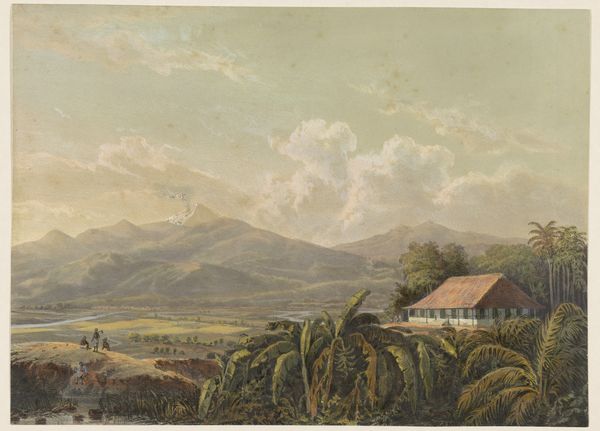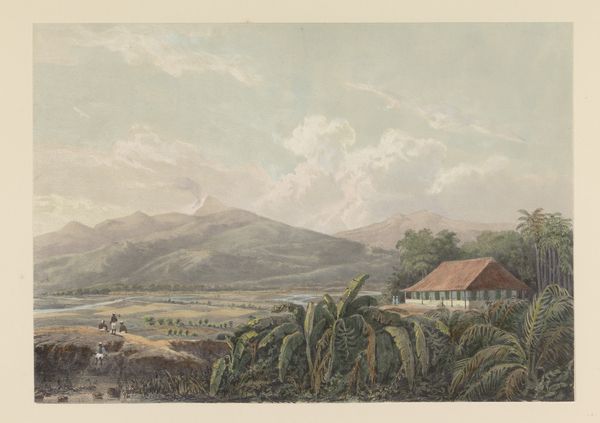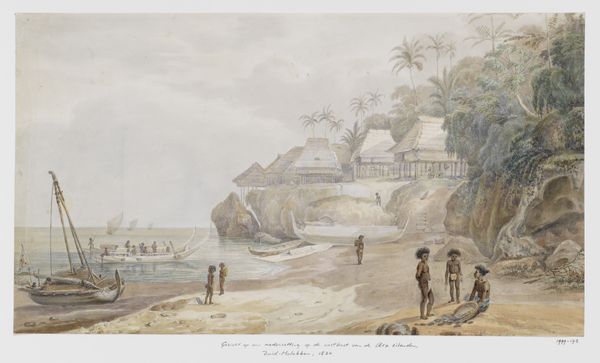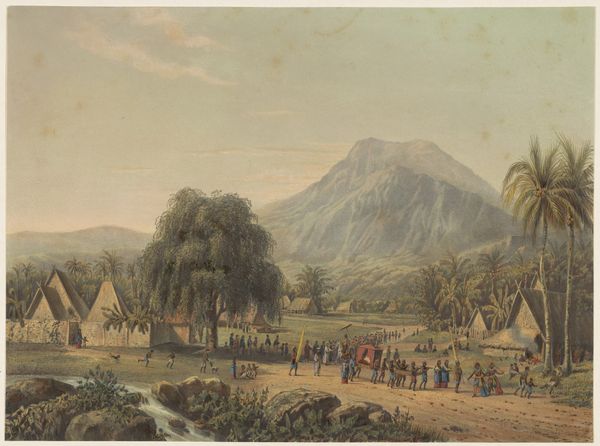
Dimensions: height 265 mm, width 363 mm
Copyright: Rijks Museum: Open Domain
Editor: This watercolor, "Landscape by Moonlight near Sumedang," was painted by Johan Conrad Greive in 1869. I’m struck by how this supposedly tranquil scene also feels heavy with the weight of colonial presence. What underlying themes am I missing? Curator: It's insightful that you recognize that tension. Though seemingly a serene landscape, we need to confront how the genre of Orientalism served to legitimize colonial narratives. Consider the perspective from which Greive, a European artist, paints this Javanese scene. Whose story is being told, and for whom? Editor: So the beauty distracts from a more complicated reality? Curator: Precisely. The Romantic aesthetic often idealizes the ‘exotic,’ masking the power dynamics at play. Notice the details – the specific depiction of the figures by the fire, the implied 'quaintness' of the dwellings. How might these images contribute to a broader European perception of Java and its people at that time? Editor: It positions the inhabitants as almost part of the landscape, not as agents in their own lives. It lacks their perspective entirely, it's such a superficial lens through which to view someone else's home. Curator: Exactly! And how does the moonlight itself function? Is it just a pretty effect, or does it serve to 'other' this space, making it seem mysterious and inherently different from a European landscape? What effect do you think this all might have had on native communities encountering art such as this, knowing this image was how they were viewed in another part of the world? Editor: I never thought about how a landscape could participate in political discourse, or flatten and misrepresent different communities. Curator: Indeed. This watercolor reminds us to critically examine the gaze through which we view art and challenge dominant narratives. It can remind us of how cultural misrepresentations, or lack of representation, contribute to marginalization.
Comments
No comments
Be the first to comment and join the conversation on the ultimate creative platform.
